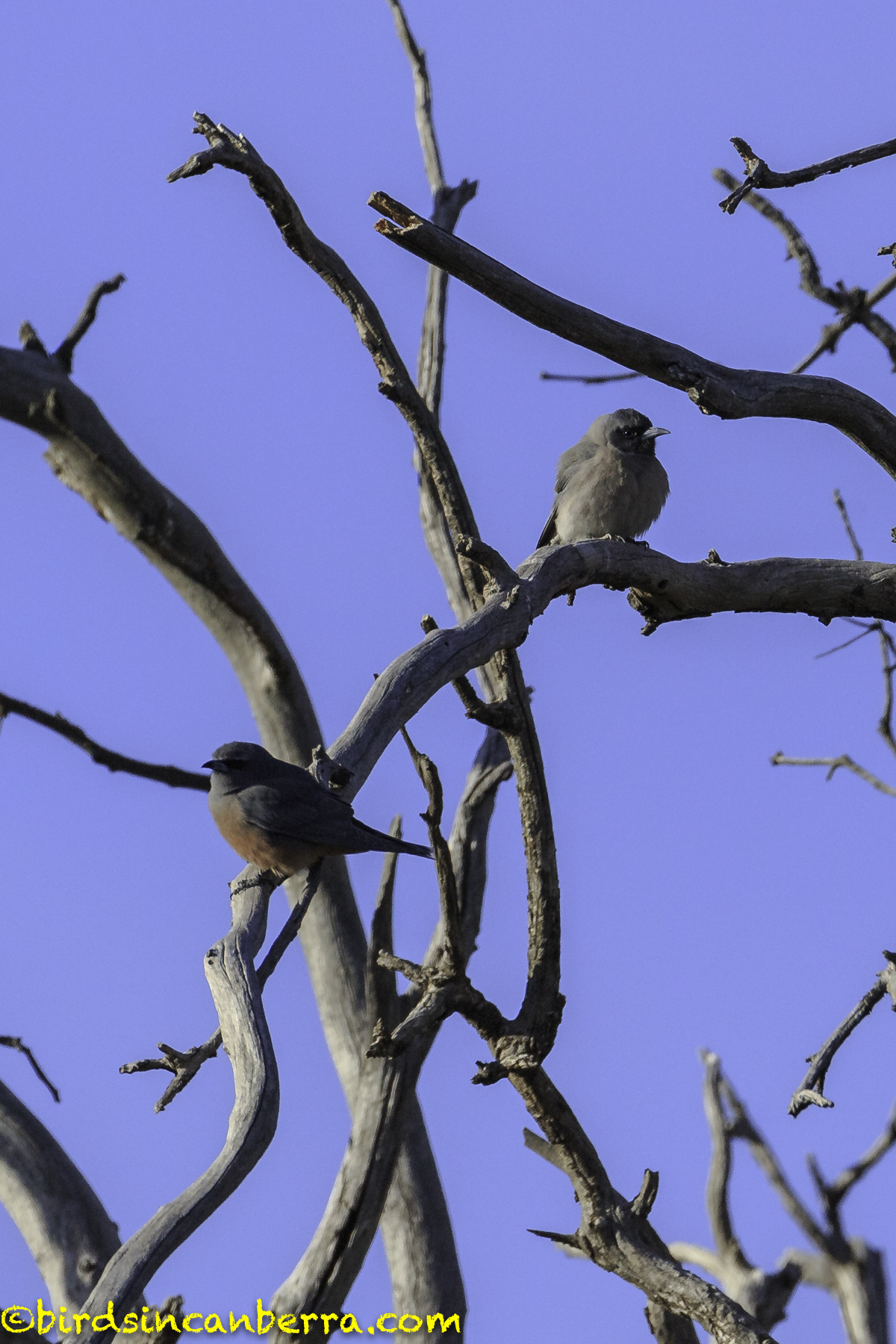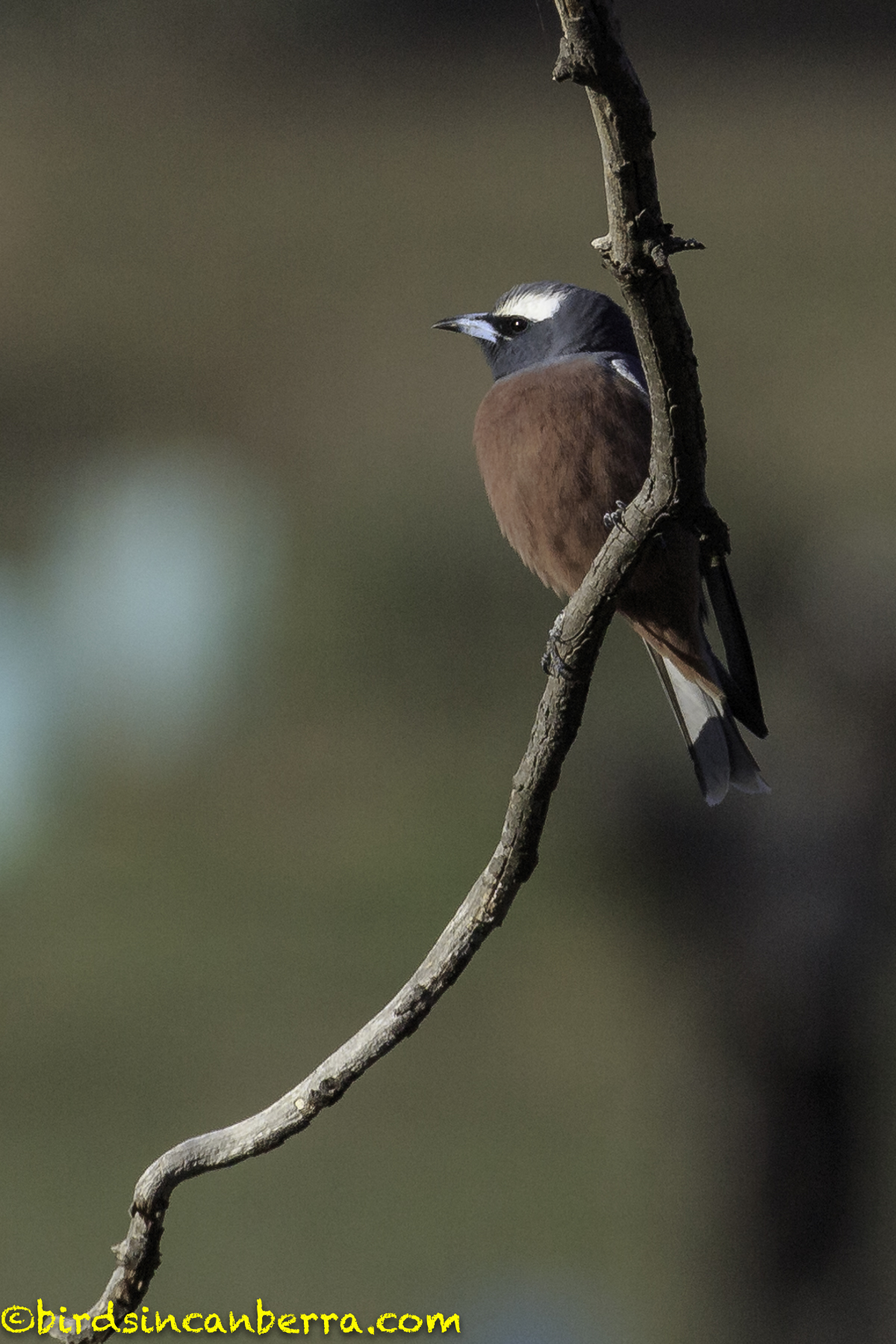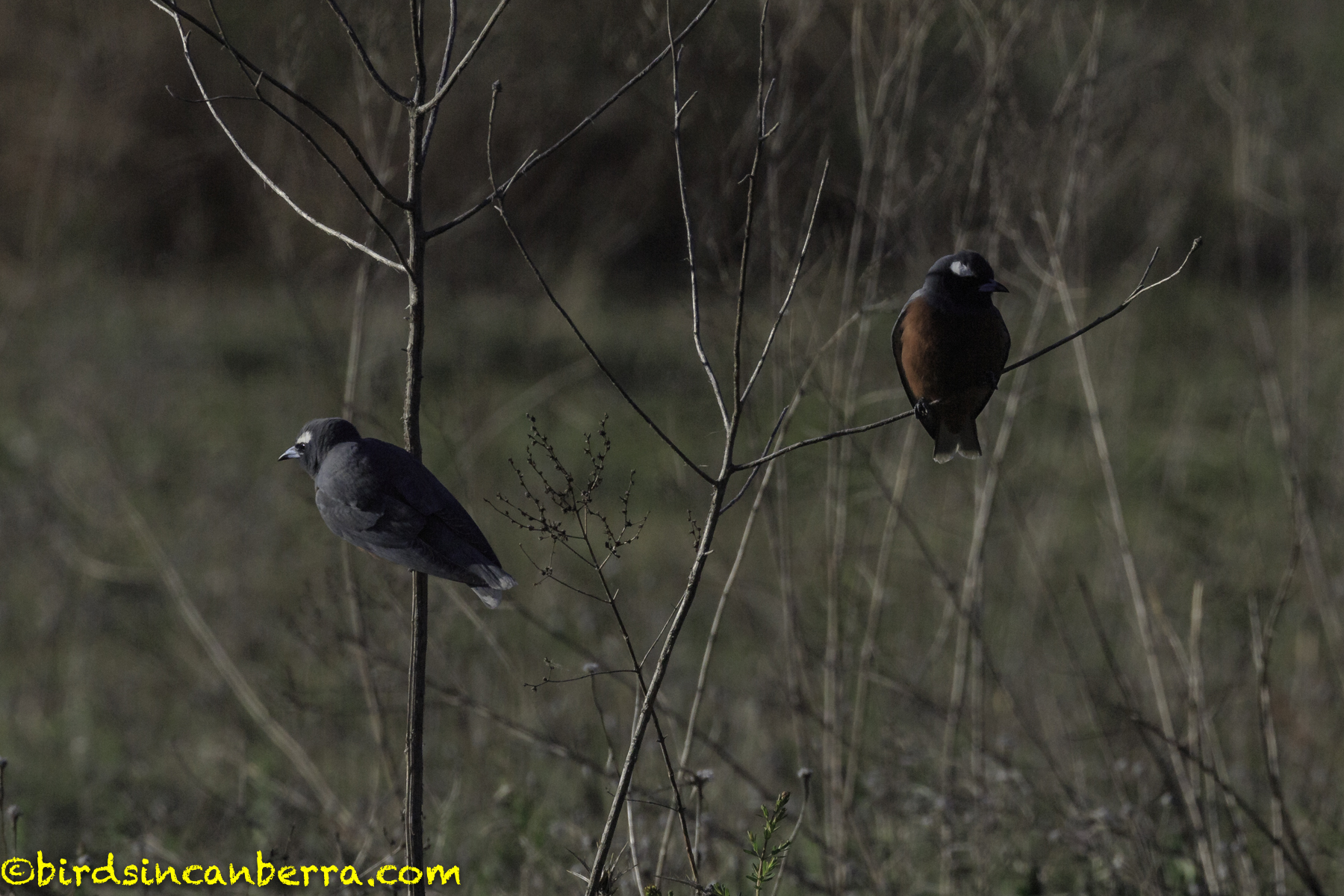This is also a post I should have had up before now. On Sunday, 28 October I went for another visit to the wonderful Callum Brae Nature Reserve. Initially, I had the plan to walk some of the path I followed on my first visit. Happily, I was distracted by bird calls, which sent me off in a different direction meaning I was able to see the birds I have posted below. It was the first time for me to see woodswallows, especially two species that seemingly live very close by to each other. The weather was beautiful reminding me once again about how lucky I am to live in Canberra where we have a variety of nature reserves easily accessible from the city.
Some of the terrain on the hill at Callum Brae Nature Reserve
The first birds I saw when I arrived at the nature reserve were two Nankeen Kestrels flying from the south-east to the north-west. The birds flew to the dead tree in the photo below but I was only able to take a photo of one of the birds and even that photo was pushing my lens to its limits. I started walking towards the tree to see if I could get closer but the Kestrels took off while I was still a distance away. They flew further to the north-east, possibly to another tree with leaves. I was unsure if they landed there as I lost sight of them among the foliage.
One of the Nankeen Kestrels, taken at the limits of my lens
There was a dead tree not far off the track which seemed to attract two species of woodswallows. There were at least three Masked Woodswallows in the tree. They seemed to be reasonably static compared to the White-browed Woodswallows. The Australian Bird Guide notes these two species flock together, however, hybridisation is rare. The first photograph could be an adult male who has fluffed his feathers up to warm himself, perched up the tree branch from a White-browed Woodswallow. The middle photograph is of an immature bird while the final photo is of a female.
This tree was also the centre of attention for a flock of White-browed Woodswallows. They were calling loudly, hence why I headed towards the tree. There were a number of small trees and bushes nearby which they were also flying to. They also spent some time on the ground foraging for food.. They tended to move in waves around the tree. The last two photographs show a young bird.
I also saw the ubiquitous Grey Fantail. There were three of them but I could only photograph one.
Climbing up the high-ground, which can be seen in the photograph at the top of this post, there was a Yellow-rumped Thornbill moving around, initially on the ground. It then flew to a tree.
Walking back towards where my car was parked I distracted by a bird call I found out belonged to a Striated Pardalote. I know these birds are common but this was the first time I had see one in the wild. It was perched on a very sizeable eucalyptus tree, making its call at regular intervals. It moved about on the tree but no other pardalotes joined it.



















